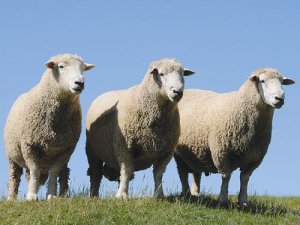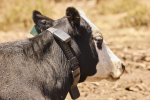Poor body condition, lameness, teeth abnormalities and age are key factors that influence whether rams remain in the flock year after year.
But of these, lameness is a key factor and dental issues also stand out, say David Robertson, Hamish Newton and Bridget Roulston from the Veterinary Centre in Oamaru.
They outlined in a paper to the NZ Veterinary Association conference a study they did on nine farms in Otago-Southland, sponsored by Beef + Lamb Genetics. The aim was to measure body weight changes and health and husbandry factors that may be associated with ram survival and culling rates.
In the paper the three vets say there are many anecdotes regarding performance and health of rams.
A preliminary survey of 22 sheep farms in Otago by Robertson and Lee (2016) showed an average culling rate among rams of 26% for maternal sires and 29% for terminal sires per year. The main causes of culling reported were feet issues, age, teeth and poor condition. The average mortality reported was 5% (range 0-28%).
With the follow-up study, objective measurements on rams were sought to examine whether there is a correlation between the degree of weight loss and the level of culling or deaths.
The study also sought to define any differences between breeds and strains of sires, as this was a common theme in anecdotes given by farmers. The causes of ram wastage such as teeth wear, lameness, poor body condition, injuries, fly-strike and worm-burdens were also quantified.
Ewe flock size on the nine farms in the study ranged from 3,000 - 15,000 ewes.
The terminal meat breeds were Dorset down, Suffolk, Hampshire down, Southdown, Poll Dorset, Suftex, Texel and South Suffolk. The maternal sires (that bred ewe replacements for the farm) were Romney, Romney-texel, Coopdale, Perendale, Coopworth and Whiltshire.
Three visits were made over the course of the year: pre-mating, post-mating and six months post mating.
Following detailed reporting of results in the paper to the NZVA conference, the authors summarised results in a discussion section.
They say ram death is a topic that evokes frustration and many opinions.
“Rams are expensive on an individual basis and have a big impact on the profitability of sheep breeding operations through their genetic influence.”
Poor body condition, lameness, teeth abnormalities and age are key factors that influence whether rams remain in the flock year on year, they say.
“At the farm level, during mating ram teams lost on average 13% of liveweight with a wide range from -6% to -25%. This range could not be attributed to factors such as breed or strains of breeds within the farm.
“There was only a modest relationship between degree of body condition loss and survival. Over the mating period, maternal and terminal breeds showed no significant differences in changes in body condition.
“The majority of rams had regained the weight they lost over mating by December. The post-mating gain may have been assisted by a more favourable spring-summer period. The previous years had been dominated by droughts.
“Rams that went into mating lame were twice as likely to have been culled or dead by December.
“There is a trend suggesting that terminal breeds are more affected by lameness than maternal rams and more likely to be culled for lameness.
“The area of ram lameness is contentious with farmers: there is the anecdotal suggestion that rams are more likely to go lame over the autumn period. Extra moisture, ram activity and testosterone levels may be contributors to this.
“Rams are more difficult to tip over and inspect, leading to less inclination to inspect the feet. There is also a reluctance amongst some farmers to prevent or treat lameness.
“From the survey (Robertson and Lee, unpublished) those farms that put effort into preventative foot measures such as regular foot troughing and inspections had lower issues – if any – with feet-related culling.
“Correcting lameness prior to the mating period along with preventative measures and early detection of lameness throughout the year is one management area that will improve longevity of rams.
“Tooth condition in rams is associated with the age of the ram (older rams are more likely to have abnormal dentition). 19% of rams with abnormal dentition at the pre-mating visit did not survive mating (versus 5% in normal rams).
“There was a notable drop-off of ram survival after five years on age.”
“Because there was an under-reporting of natural deaths versus culling in this study despite reminders to farmers to record deaths, established causes of deaths were not defined in this study,” the paper says.
“Improving the health and welfare of rams by focusing on the basics of animal husbandry is likely to increase their longevity on farm with minimal time and economic investment.
“From a veterinary perspective the routine ram breeding soundness examination is a good opportunity to discuss the basics of -- and maybe also administer -- routine worm control, fly prevention, clostridial boosters and preventative or curative hoof treatments.
“Raising awareness of minimum pre-tupping weights and post-mating feeding will also benefit ram outcomes.”

















